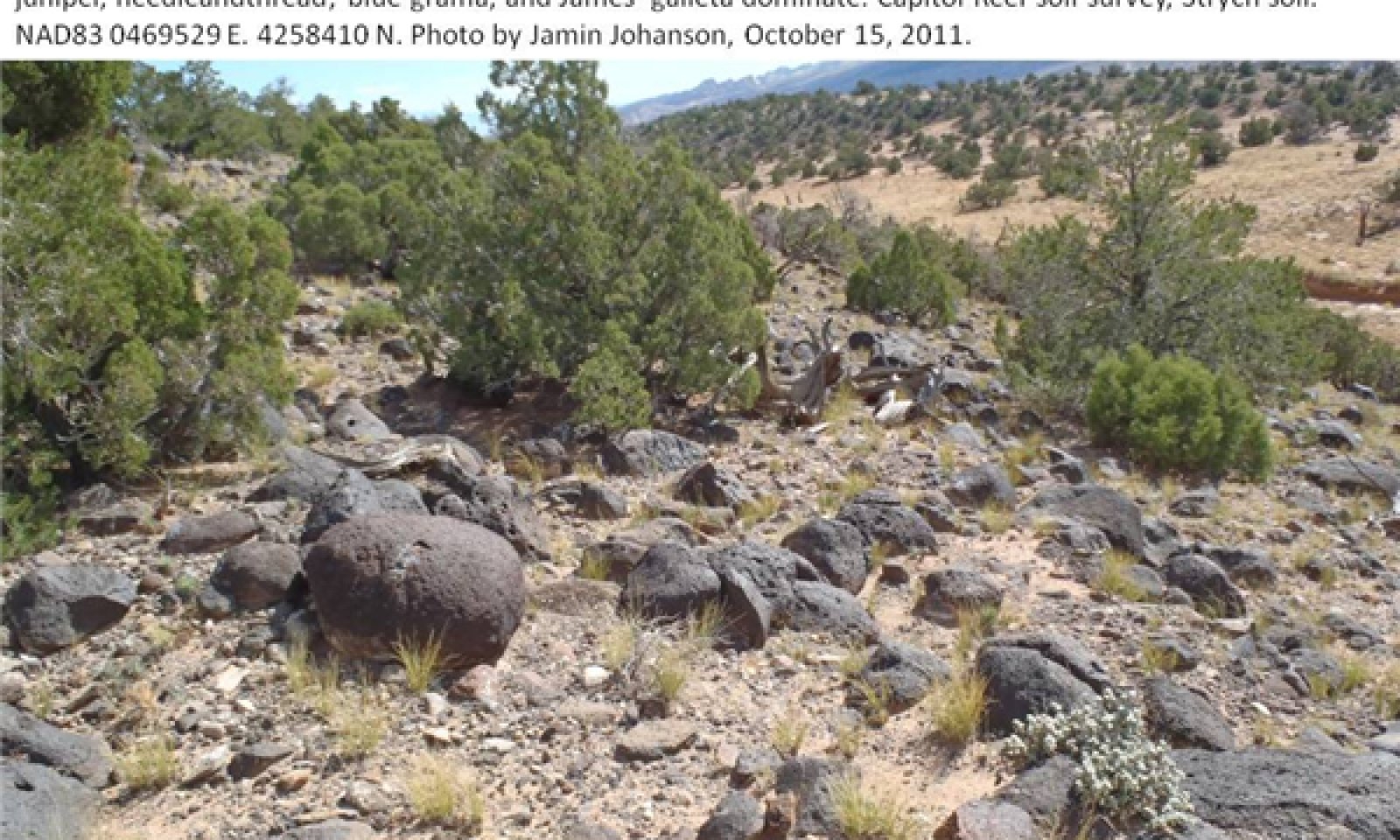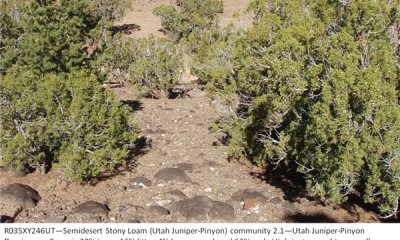
Semidesert Stony Loam (Utah Juniper-Pinyon)
Scenario model
Current ecosystem state
Select a state
Management practices/drivers
Select a transition or restoration pathway
- Transition T1 More details
-
No transition or restoration pathway between the selected states has been described
Target ecosystem state
Select a state
Description
The reference plant community is dominated by diverse perennial grasses and Utah juniper. Two-needle pinyon is also abundant, and diverse shrubs and forbs can make up a significant portion of the community in some areas. The reference state is highly resistant to erosion due to high grass cover and high rock fragments on the soil surface. Areas with fewer rock fragments and coarser soil textures may be less resillient following disturbance that removes perennial grasses, such as improper livestock grazing. Non-native invasive species have not been documented on this site, but cheatgrass is likely capable of establishing.
Submodel
Description
This state results when perennial grasses are lost from the system and trees increase and dominate. Soil erosion becomes a hazard, and non-native invasive species, particularly cheatgrass, may be more likely to establish in this state. However, non-native species have not been documented on this ecological site.
Submodel
Mechanism
This transition occurs when perennial grasses are reduced by improper livestock grazing (heavy stocking rates, continuous season-long grazing, etc.) followed by an increase in Utah juniper and pinyon (West et al. 1998). The resulting state is unable to regain perennial grasses without significant management inputs.
Model keys
Briefcase
Add ecological sites and Major Land Resource Areas to your briefcase by clicking on the briefcase (![]() ) icon wherever it occurs. Drag and drop items to reorder. Cookies are used to store briefcase items between browsing sessions. Because of this, the number of items that can be added to your briefcase is limited, and briefcase items added on one device and browser cannot be accessed from another device or browser. Users who do not wish to place cookies on their devices should not use the briefcase tool. Briefcase cookies serve no other purpose than described here and are deleted whenever browsing history is cleared.
) icon wherever it occurs. Drag and drop items to reorder. Cookies are used to store briefcase items between browsing sessions. Because of this, the number of items that can be added to your briefcase is limited, and briefcase items added on one device and browser cannot be accessed from another device or browser. Users who do not wish to place cookies on their devices should not use the briefcase tool. Briefcase cookies serve no other purpose than described here and are deleted whenever browsing history is cleared.
Ecological sites
Major Land Resource Areas
The Ecosystem Dynamics Interpretive Tool is an information system framework developed by the USDA-ARS Jornada Experimental Range, USDA Natural Resources Conservation Service, and New Mexico State University.


